In the history of flight, there have been many aircraft lost. Some have been accidental; some deliberate (i.e. sabotage, etc.); and many the result of wartime encounters with enemy fire from the ground or other aircraft. Out of these disasters have come some truly amazing stories of survival against all odds. I’d like to use this Weekend Wings to look at some of the stories that have caught my imagination over the years.
Most early air vehicles (balloons, airships and aircraft) had no provision for any means of escape in the air. Parachutes were known, but had not been developed into survival tools. The history of their development is very interesting.
The Islamic scholar Abbas Ibn Firnas (810-887), a truly remarkable man with many skills and interests, designed what was probably the first parachute-like device known to history. In 852 he jumped off the minaret of the Mezquita, the Great Mosque in Córdoba, in what was then the territory of Al-Andalus, also known as the Caliphate of Córdoba. It’s today part of Spain. (Click this and other pictures for a larger view.)
He was wearing what’s been described as a “huge wing-like cloak”, which broke his fall. He landed safely with only minor injuries. In a later attempt at flight, in 875 (when he was 65 years old), he tried to glide from a hill near Córdoba. A later Islamic scholar, Ahmed Mohammed al-Maqqari, writing in the 17th century and basing his account on earlier testimonies, described the attempt thus:
Among other very curious experiments which he made, one is his trying to fly. He covered himself with feathers for the purpose, attached a couple of wings to his body, and, getting on an eminence, flung himself down into the air, when according to the testimony of several trustworthy writers who witnessed the performance, he flew a considerable distance, as if he had been a bird, but, in alighting again on the place whence he had started, his back was very much hurt, for not knowing that birds when they alight come down upon their tails, he forgot to provide himself with one.
There’s considerable disagreement among modern scholars as to whether he “flew” or “fell”, and so long after the event (and in the absence of scientific records) we can’t be sure: but his injuries can’t have been too serious. Abbas Ibn Firnas lived another 12 years, and was active in invention and scientific inquiry until his death. His memory is honored among Muslims and Arabs to this day as a polymath, or what would later come to be known as a “Renaissance Man”.
An anonymous Italian manuscript dating from about 1470 shows two types of parachute, designed to permit escape from a burning building, but there’s no indication that these were ever more than fanciful designs. A few years later, in about 1485, Leonardo da Vinci (1452-1519), perhaps the archetypical polymath, invented a parachute design that was only a sketch, and as far as is known was never tested in reality.
More than five centuries later, a Swiss parachutist, Olivier Vietti-Teppa, finally demonstrated successfully a modern (and slightly modified) recreation of da Vinci’s parachute. I wrote about it on this blog back in April.
The Croatian polymath Faust Vrančić published a book in 1595 called Machinae Novae. It contained 40 pictures depicting 56 different machines, devices and technical concepts, including the first-ever Western designs for suspension bridges. One of the illustrations, titled “Homo Volans”, showed a man descending from a tower beneath a parachute-like device.
In 1617 Vrančić jumped from a tower in Venice using a parachute of his design. It worked, and he reached the ground safely. The event was documented in 1648 by the English clergyman and author John Wilkins.
The first widely-witnessed and -recorded parachute descent was made by a French inventor, Louis-Sébastien Lenormand (1757-1837), who also invented the term “parachute” to describe the device. In December 1783 he jumped off the tower of the Montpellier Observatory before a crowd that included Joseph Montgolfier, the famous balloonist. He used a 14-foot parachute with a wood frame.
Lenormand envisaged his parachute as a device to help people escape from a burning building: but with the advent of balloons, it was clear that it could be used for more exciting and useful purposes. The pioneering balloonist Jean-Pierre Blanchard (1753-1809) used wood-framed parachutes to safely drop dogs from his balloon to the ground. The dogs probably didn’t enjoy such demonstrations, and doubtless rejoiced when, in 1793, Blanchard had to use one of these parachutes himself when his balloon ruptured. He thus became the first person whose life was saved by a parachute during an in-flight emergency.
Later that decade he began working with frameless parachutes made of silk, which could be folded and kept in a neat bundle in case of need. Another French inventor, André-Jacques Garnerin (1769-1823), also worked with such parachutes, and it’s disputed which of these two actually invented them. They may have happened upon the idea more or less simultaneously, as often happens. Garnerin’s parachute design is shown below.
It’s certain that Garnerin made the first descent using such a parachute, in October 1797, when he ascended over Parc Monceau, Paris, beneath a balloon, deployed his parachute, released the balloon and floated back to earth.
Garnerin went on to develop the vented parachute, providing a means for air to escape through a hole, or vent, at the top of the canopy. This solved a major problem, as air escaping out the sides caused earlier canopies to oscillate, making their control very difficult. Indeed, Garnerin complained that following a violently oscillating descent, he was physically nauseated for some hours afterwards. Some sources suggest that the idea for a vent came from the French astronomer Jérôme Lalande (1732-1807), who observed one (perhaps more) of Garnerin’s descents. With a vented parachute, the descent was far more stable. Furthermore, lines could be used to pull one side of the parachute down, allowing more air to escape from the other side. This allowed the user to have at least a little control over the direction of flight during descent, and avoid obstacles if he had sufficient height to side-slip past them. Garnerin tested such a parachute in 1804.
A Polish balloonist, Judaki Kuparento, is said to have used a parachute to escape from his burning balloon over Warsaw in 1808. However, nothing is recorded of the type of parachute used or its method of operation.
Robert Cocking (1776-1837), an Englishman, read about the oscillations of Garnerin’s early parachutes in an article by Sir George Cayley (1773-1857), the British aviation pioneer. Cocking designed an inverted-cone-shaped parachute, with an internal wood frame, that he hoped would eliminate the oscillations.
Unfortunately it was flimsily built, and proved unable to support its own weight, plus that of Cocking. When tested in 1837, dropped from a balloon at about 5,000 feet, it turned inside-out and plummeted to the ground, killing Cocking, who thus became the first person to die in a parachuting accident. Modern investigations have revealed that if it had been better made, and used better-quality materials, and been a little larger, Cocking’s parachute would probably have worked very well.
For most of the 19th century the parachute was a curiosity, used by performers to aid in their entertainment, dropped from beneath balloons. The next step forward came in 1887, when Thomas Scott Baldwin (1860-1923), an American aviator, developed a body harness that made it more practical to use a parachute.
Baldwin made many jumps from beneath balloons. According to the National Aviation Hall of Fame:
In front of an audience at San Francisco’s Golden Gate Park on January 30th, 1885, Baldwin offered the park manager a deal-he would jump from a hot-air balloon for $1.00 per foot of height, with 2,000 feet being the maximum. The crowd, unknowingly, witnessed the first public descent from a balloon with a parachute. Baldwin was now dubbed “The Father of the Modern Parachute.” Baldwin’s parachute jumps were nothing like modern parachute jumps. While holding on to a ring fastened to his dangling parachute, he would ascend in a sitting position on a small seat beneath his balloon. When he reached the desired altitude, Baldwin would pull a rip panel in his balloon to release the hot air, causing the balloon to begin a rapid descent. With the momentum needed to fill the parachute with air, Baldwin would then jump from the seat. Neither he nor his brother ever patented their parachute design and construction. Baldwin later commented, “We never thought anyone else would care to try it.”
There is a dispute over who invented the first packed parachute to be worn on the body. It’s known that in 1890 the German aviation pioneers Paul Letteman and Kathchen Paulus developed a method of packing a parachute in a canvas container, similar to a kit-bag. The container was fastened below a balloon, and the parachute was released from the bag by a static line. However, there’s dispute as to whether they intended their original parachute to be worn on the body, or attached to the aircraft. Paulus also developed the first breakaway parachute, where a small parachute opened, pulling a larger parachute out of a container before detaching itself and letting the larger parachute support the descent.
Early in the 20th century an American parachutist, Charles Broadwick, designed a parachute pack that was laced together with cord. A static line was fastened between the cords and the aircraft. When the parachutist jumped, the static line broke the cords, allowing the parachute to spill out. The pack could be fastened either to the parachutist or to the aircraft (with the parachute itself attached to a harness worn by the parachutist in either case). This concept was taken further in 1911 by a Russian designer, Gleb Kotelnikov (1872-1944). He designed a knapsack parachute, where the latter was packed in a rucksack-like container worn on the back of the parachutist.
Kotelnikov’s rucksack parachute was adopted by Letteman and Paulus in their later efforts, replacing their earlier kit-bag-like design. However, the latter, attached to the aircraft or balloon, was still widespread. Paulus used it as the foundation for the parachute used by German observation balloon crews during World War I, manufacturing about 7,000 of them in her factory in Berlin. The picture below shows a German balloon observer jumping from his craft during a demonstration. His Paulus parachute can be seen deploying from its container, tied above the balloon basket.
Such parachutes saved the lives of many German balloon observers, but also killed some of them when the falling, blazing balloon set fire to their parachutes. Clearly, a parachute attached to the crewman, and falling free with him, would probably have been a better option.
Fuselage-attached parachutes were also provided for some members of the crews of Zeppelin airships. The photograph below shows them lying next to the gun position on top of a Zeppelin, from where crew members would shoot at attacking aircraft.
Again, the flames from burning hydrogen gas inside the Zeppelin made the use of such parachutes very problematic in an emergency.
All parachutes thus far developed were of the static-line type: a cord attached to the parachute pulled it out of the container. The other end of the cord was usually made fast either to the balloon or aircraft (if the parachute was worn on the body) or to the parachutist (if the parachute was attached to the balloon or aircraft). In 1908 an American parachutist, Leo Stevens, designed a parachute pack that could be manually opened with a rip-cord, releasing the parachute to inflate by air pressure. The rip-cord release was gradually incorporated into other designs of parachute, and is today standard among sports parachutists. Of course, the parachute had to be very carefully packed to ensure that it would flow freely out of its pack and inflate normally. There were several fatalities in the early days before this lesson was learned and packing techniques were improved. Paulus’ breakaway parachute, or “drogue chute” as it later became known, proved to be a useful aid to opening the main parachute from such packs. The rip-cord parachute was not fully perfected until after World War I.
Stevens’ parachute pack was used by Arthur Lapham and Frederick Law to perform exhibition jumps around the USA, leaping from planes, bridges, and even the Statue of Liberty. Lapham caused something of a sensation at an exhibition in 1913. According to Jim Hamilton in his book Long-Fall Survival:
In May of 1913 Arthur Lapham was planning to jump with a ‘Stevens’ pack at a flying carnival on Staten Island. He intended to drop a mile from a Wright airplane that was piloted by H. B. Brown. However Lapham fell accidentally from his seat at a height of about 300 feet. He landed in a salt marsh near Prince’s Bay. Buried up to his armpits in mud, he had to be dug out with shovels.
Lapham was able to deploy his parachute, but it didn’t have enough altitude to fully inflate. Nevertheless, the combination of the streaming parachute and the soft mud on which he landed were enough to save his life, and he escaped without serious injury. He was only 21 years old at the time.
The first person known to have jumped from an airplane (rather than a balloon) with a parachute was Grant Morton. In late 1911 he jumped out of a Wright Model B aircraft, piloted by Philip Parmalee, over Venice Beach in California. Morton held the parachute loosely in his arms, attached to a harness over his body, and threw the parachute out as he jumped from the aircraft. In March 1912 US Army Captain Albert Berry jumped from a Benoit biplane over Jefferson Barracks, Missouri. His parachute was in a metal container attached beneath the aircraft, and was pulled from the container by a static line as Berry fell. Berry was seated on a trapeze bar, rather than wearing a harness. This was the first time a “pack” parachute had been used from an airplane.
The first woman to jump from an airplane with a parachute was Georgia Broadwick, known as “Tiny” because of her small stature. In June 1913 she jumped from an aircraft flying over Los Angeles. She is shown below preparing for the jump. Note that she’s using a trapeze parachute, sitting on a seat with the parachute (the white bundle) above her head. It would be deployed by a static line attached to the aircraft. Note, too, the cone-shaped wind deflector attached to the fuselage in front of her, to keep the slipstream away from her until she jumped.
In 1914 Broadwick demonstrated parachutes to the US Army. On one jump the static line between her parachute (worn on her back) and the aircraft became entangled in the undercarriage. She cut the line free (severing it from its attachment to the aircraft at the same time), jumped from her seat, and pulled on the line as she fell, allowing the parachute to open. In this way she made the first free-fall parachute jump from an airplane, entirely by accident.
In 1913 Štefan Banič designed the first military parachute. He tested it in Washington DC in front of the US Patent Office, leaping off a 41-floor building, and again in 1914 from an airplane. It looks odd in comparison to modern parachutes, as it was a framed device attached to the pilot’s torso rather than streaming out above him: but it worked, and was used by some US pilots during World War I. He donated his patent, no. 1,108,484, to the US during the war, and made little or nothing from his invention.
Parachutes were available during World War I in packs attached to balloons or aircraft, and sometimes worn on the aviator’s back. The latter could not fit into the small cockpits of fighter aircraft of the day, and were thus not much used. In 1917 a German airship mechanic, Otto Heinicke, developed a parachute worn in a cushion or seat pack beneath the pilot of an aircraft. This seat pack became a standard item in later years, and many pilots in World War II used them. The Heinicke parachute is shown below.
Almost unbelievably, during World War I most air forces did not issue parachutes to most of their pilots and aircrew until almost the end of hostilities. Many of the senior leaders of air arms were not themselves pilots, and had little understanding of the ghastly death that falling from altitude entailed. Many believed that pilots might take to their parachutes rather than fight it out with opponents, or use them as an excuse not to undertake dangerous missions by baling out, allowing their aircraft to crash, then claiming that a mechanical defect was to blame. A British officer commented, “The issue of parachutes will undoubtedly reduce [pilots’] aggressive and fighting spirit because the knowledge that this apparatus is available will soften the pilot’s resolve to engage the enemy more closely.”
Such attitudes (shared by all belligerent nations) led to the death of countless airmen, trapped in crashing aircraft, burned to death when their flimsy biplanes caught fire, or falling free for thousands of feet to smash into the earth with bone-shattering force. Only in 1918 did parachutes become more generally available, and many lives were saved during that year – but this was far too late for the many thousands of casualties earlier in the war.
To give an indication of the scale of the problem: France produced 68,000 aircraft during World War I. No less than 52,000 of them (almost 77% of the total) were lost. Admittedly, many would have crashed in accidents, and others would have been destroyed on the ground by artillery bombardment or aircraft bombs: but even taking this into account, and allowing only one occupant per aircraft (many were two-seaters or larger), the casualty figures were immense. Adding German, British, Russian, Italian and US casualties to the French total, it’s believed that up to 200,000 aviators lost their lives during the Great War. Most were not equipped with parachutes. If World War II casualty statistics could be applied proportionately to World War I losses, it’s clear that up to 25% of those lost might have been saved if they’d been wearing parachutes. That’s 50,000 lives. The potential saving of life might have been even higher, because many World War II casualties were from large bomber crews (7-10 people). If such an aircraft blew up or burned in mid-air, few crew members would make it out. The smaller World War I bomber aircraft carried a maximum of three to four crew members, and there were far fewer bombers, so losses from this cause would have been much lower.
After World War I, the rip-cord parachute was perfected, and they were issued on a general basis to all aircrew. New designs of parachute canopy were developed, offering greater control over its flight. Some of the attempts proved rather hazardous in testing, as the video clip below shows. It was taken in the 1920’s. The parachute was inflated by a fan, and the test “pilot” then jumped off a cliff! He made (presumably painful) contact with the rockface several times on the way down.
Stunt-men continued the barnstorming tradition, trying to use parachutes in various ways not dreamed of by their manufacturers. Not all such attempts were successful, as this 1920’s footage shows.
Attempts were also made to apply the parachute to save entire aircraft, with all their occupants. Tests proved that this was entirely feasible, as shown in the video below (dating from the early 1930’s).
The subsequent history of the parachute is well-known, and I don’t propose to go into it here. However, there are many stories of amazing escapes, with and without parachutes, and I’d like to devote the rest of this Weekend Wings to considering some of them. The common factor is that something went badly wrong – yet these people survived.
First, let’s look at whole-aircraft parachutes. The early tests of the 1920’s and 1930’s weren’t applied to general aviation for several decades, but in the 1970’s new efforts were made to equip light aircraft with parachutes. Today Cirrus Design Corp. offers its Cirrus Airframe Parachute System, or CAPS, as standard equipment on its aircraft.
The parachute, made by Ballistic Recovery Systems of St. Paul, MN, can also be fitted to other light aircraft. The video below shows it in operation in an emergency, filmed from inside the crashing aircraft.
Even if a parachute deploys, it may not do so correctly, or there may be other problems that prevent it doing what it’s supposed to do. As might be imagined, airborne soldiers, dropping in the midst of many other parachutists and containers of equipment, are particularly vulnerable to such accidents.
Gus Bernardoni was a member of the US Army’s 501st Parachute Infantry Regiment during World War II. On September 17th, 1944, he jumped into Holland as part of Operation Market Garden, designed to capture a series of bridges leading up to the German border, and immortalized by Cornelius Ryan in his book “A Bridge Too Far“, which was later made into a very successful film. It was the largest airborne operation in history, delivering 36 battalions with over 34,000 troops (over 14,500 landing by parachute and the rest by glider). More than 1,750 transport and towing aircraft were involved, along with almost 3,000 gliders.
Bernardoni’s experience typifies the hazards of jumping in such a crowded sky. His plane lurched as he jumped (perhaps hit by anti-aircraft fire, or trying to avoid another aircraft), and he fell into the lines of his own parachute, preventing it from opening fully. In addition, two bundles of equipment dropped from other planes collided with him during his descent, making him fall even faster. One of them, containing a 500lb. mortar, actually landed on top of him! Amazingly, he wasn’t killed, but nevertheless suffered severe injuries, including damage to his spinal cord and ribs and partial paralysis of his right leg.
After months of surgeries and hospital treatment, Bernardoni began to recover. A doctor suggested that he take up golf as a means of rehabilitation, and he went on to build a major ministry in this way, reaching out to other disabled and handicapped persons through golf. In 1978 he published a book called “Golf God’s Way”, describing how golf had been the means for him to recover almost completely from his injuries and, in turn, became a vehicle whereby he could help others. He won the Illinois Senior PGA title in 1974. The latest mention I’ve been able to find of him was in 2005, when, at the age of 84, he entered the US Golf Association’s US Senior Open! At the time he was living in Aledo, TX.
Military parachuting is still hazardous. During the summer of 1977 Michael Cox was a radio operator with the 82nd Airborne Division, based at Fort Bragg, NC. During a training jump from 1,200 feet, Cox leapt from the side door of a C-130 Hercules aircraft. The two pictures below (the second an enlargement of the first) show how this is done. In the second photograph, the static lines used by parachutists to open their chutes can be seen streaming out along the fuselage behind the doors.
Cox hit the side of the plane and spun during his exit. This prevented his parachute from opening properly. He fell very fast, landing in a sandy area and being knocked unconscious for almost an hour. Amazingly, he was able to walk back to the mustering point for his unit – where his company commander ordered him to do fifty push-ups as a punishment for arriving late! He collapsed while doing them, and was taken to hospital, where it was discovered that he’d fractured his neck. Despite his company commander’s efforts, Cox made a full recovery, and jumped again six weeks after his accident.
Of course, not only people are dropped by parachute. Equipment and vehicles can also descend safely beneath canopies . . . or, rather, they’re supposed to. The video clip below of US airborne operations shows that this isn’t always the case!
The nation making the most combat parachute drops (albeit on a small scale each time) was unquestionably Rhodesia. During the 1970’s it fought a guerrilla war with Black nationalist insurgents, using the concept of the “Fire Force” to insert reaction teams from the air to deal with the enemy. The Fire Force used helicopters to land small groups to pin down the insurgents, and then dropped “sweep sticks” by parachute from C-47 transports (all of them older than most of the troops who jumped out of them!) to move through the area and deal with the enemy. They had no choice but to use parachute troops for this purpose, as Rhodesia didn’t have enough helicopters.
It was not unknown for Fire Force troops from the Rhodesian Light Infantry or the Rhodesian African Rifles to make up to three combat jumps a day – an astonishing figure. Veterans of those years claim that some of their number made over five hundred combat drops. That’s certainly feasible. Other Rhodesian units such as the Special Air Service and the Selous Scouts used parachutes for external operations. The video clip below shows Rhodesian forces in action, including parachute operations.
The need to insert groups of parachutists quickly meant that dropping altitudes were as low as possible. Injuries caused by insufficient altitude were undesirable, but also unavoidable in the light of operational realities. The troops had to reach the ground as quickly as possible to prevent the enemy escaping. Many drops were made at the minimum altitude of 300 feet – and the parachutes used by Rhodesian forces needed 250 feet to open! On one occasion a number of casualties were incurred when a drop began at a height of just over 250 feet. The aircraft flew straight and level, but the ground rose beneath it, so that the last members of the stick were dropped at a height above ground of only about 200 feet. Half the stick suffered broken bones and other injuries as a result.
A good account of Fire Force operations may be found here. Highly recommended reading.
Civilian parachuting can also be hazardous. In Marstons Mills, MA, during July 1962 Lois Frotten and her fiancé decided to try their first skydive to celebrate their engagement the previous day. Unfortunately Frotten’s first jump was almost her last. Her foot became entangled in her parachute lines, and the chute didn’t open properly. She fell almost 2,500 feet, but at very low altitude her chute finally began to open, slowing her fall: and she was over the water of Mystic Lake, which further cushioned the impact. Her jumpmaster landed near her in the water, and was able to support her until a rescue boat arrived. She broke her nose and several vertebrae, but recovered after a week in hospital and several weeks in a back brace. She became something of a celebrity, appearing on the television show “What’s My Line?“. Her line, apparently, was “Never again!”, as she didn’t undertake another jump.
Weddings appear to attract a certain breed of parachutist – the accident-prone variety! Here’s footage of a recent attempt.
A remarkable incident took place on October 18th, 1975 at Ashbourne in England. A Cessna 182 aircraft, similar to that shown below, took off carrying three parachute students, an instructor, and the pilot.
The first student jumped without problems, and the second, Stuart Avent, moved into position. While doing so he slipped between the wing strut and the starboard undercarriage leg. He fell, and hung vertically from the strut before letting go. His main parachute deployed, wrapping around the undercarriage, dragging him behind the aircraft.
The instructor ordered the pilot to climb, and tried to cut away the entangled main parachute with a knife so that Avent could descend using his reserve parachute. Unfortunately, Avent activated his reserve chute before his main chute could be fully cut away. His reserve opened normally, dragging the aircraft into an inverted nose-down position. Very fortunately for all concerned, the engine cut out, and the aircraft (with three occupants) dropped with the parachutist, all suspended below one small reserve canopy! The (rather grainy) photograph below shows them during their descent. The small dot below the reserve parachute is Stuart Avent, with the aircraft below him, suspended from the lines of his main parachute, which are still wrapped around the wheel. The ground can be seen at the bottom of the photograph.
Amazingly, the small reserve chute didn’t rupture under the strain, although their descent was, of course, much faster than normal. The aircraft hit the ground at the edge of the airfield. The pilot broke his jaw, the parachute instructor broke both thighs, and a female student broke both ankles, but all survived and made full recoveries. Relieved of the weight of the aircraft and its passengers, Avent made a safe landing without injury. The same can’t be said of the aircraft!
Scott Lutz might be described as an extraordinarily lucky man to be alive. The video clip below shows why.
The same can be said of Dana Bowman, a member of the US Army’s Golden Knights parachute team. He was involved in the most horrific accident in the history of the team. The video clip below tells his story. WARNING: Contains graphic footage.
Bowman lost both legs, but recovered fully, and re-enlisted in the Army. He continued to sky-dive, although not with the Golden Knights, and continues to participate in many sports. He’s a wonderful example of determination and courage.
Military pilots have had their share of miraculous escapes. Lieutenant-Colonel William Rankin is one of them, the only person to have survived parachuting into a cumulonimbus thunderstorm cloud – a “fall” that turned into a flight lasting over 40 minutes and covering more than 65 miles!
In the summer of 1959, Rankin was on a routine flight from South Weymouth Naval Air Station, Massachusetts to Beaufort, North Carolina. He was climbing over a thunderhead which peaked at 45,000 ft (13.7 km). Flying at 47,000 ft (14.3 km) and at mach 0.82, a loud bump and rumble was heard from the engine, the rpm fell to zero, and the fire warning light began flashing. As he pulled the lever to deploy the auxiliary power, the lever unexpectedly broke off in his hands. Although the temperature outside was −50°C and he was not wearing a pressure suit, his only choice was to eject. At 6:00 pm, he ejected from the plane. He suffered immediate frostbite, and decompression caused his eyes, ears, nose, and mouth to start bleeding. His abdomen swelled as if he was pregnant. Pain seared across his body, but it was numbed by the cold. He managed to use his emergency oxygen supply. Five minutes had passed since the beginning of his descent, but his parachute did not yet open. He was still in the upper regions of the thunderstorm, with near-zero visibility, when his parachute opened. After ten minutes, when he should already have landed, Rankin was being carried upward by updrafts and was getting hit by hailstones. The violent spinning and pounding caused him to vomit. Lightning appeared, resembling blue blades several feet thick, and the thunder was felt physically. The rain was posing a drowning hazard, and he had to hold his breath. One lightning strike lit up the parachute, making Rankin believe he had died. After this, conditions began calming, and he descended in a forest. His watch read 6:40 pm. He went searching for help and was admitted into a hospital at Ahoskie, North Carolina. He suffered from frostbite, welts, bruises, and severe decompression.
Navy Lt. (j.g.) John Kryway had a miraculous escape from his F8U-1 Crusader fighter aboard the USS Franklin D. Roosevelt in October 1961, while the carrier was cruising near the Dominican Republic in the Caribbean. The photographs below show the sequence of events. In the first, as he touches down, the deck dips, causing a rough landing. This breaks off his aircraft’s starboard (right) wheel, which bounces up into the wheel well and ruptures the fuel line. You can clearly see the cloud of fuel vapor.
As the Crusader races down the flight deck, the fuel ignites.
The tailhook catches the arresting cable, but breaks off.
The fighter rushes on towards the edge of the angled flight deck. Less than two seconds have elapsed since touch-down.
The Crusader reaches the edge of the angled flight deck.
The canopy begins to open as Lt. Kryway activates the ejection sequence.
As the aircraft sinks towards the sea, Lt. Kryway is fired out of the cockpit. He is shown here upside-down in his ejection seat, still rising.
His aircraft crashes into the water as Lt. Kryway begins to fall. His seat begins to separate from his body as the parachute mechanism is activated.
As Lt. Kryway falls below the level of the flight deck, his pilot (drogue) chute pulls his main parachute out of its pack. His ejection seat can be seen next to his body.
Amazingly, Lt. Kryway survived the impact with the water. The retrograde motion provided by his ejection, coupled with the slight braking effect of the streaming (but not yet filled) parachute, cushioned his fall just enough to save his life. He was picked up by a helicopter, and flew again soon afterwards.
Ejection seats have saved many lives on aircraft carriers. Landing, taking off and maneuvering aircraft in such a confined space carries with it many hazards. Here are two video clips showing the need for very rapid action. In the first, a US A-7 Corsair II strike aircraft taxies across the flight deck, but its brakes fail, causing the pilot to eject seconds before it goes over the side into the sea.
In the second, a Soviet Sukhoi SU-33 fighter-bomber catches the arrester cable on landing, but its hook slips off the cable and it falls off the edge of the angled flight deck into the sea. The pilot ejects just in time.
Another Soviet aircraft, a MiG-29, was captured on film as it crashed at the Paris Air Show in 1989.
The remarkable thing about this ejection is how desperately close to the ground it took place. As this still photograph shows, at the moment of the aircraft’s impact with the ground, the pilot’s chute is not yet fully deployed (it didn’t have time to do so), and he’s on the point of hitting the ground himself. His fall was sufficiently slowed by the motion imparted by his ejection seat, and his partly-opened parachute, that he survived with relatively light injuries.
Parachutes and ejection seats have saved many lives: but there are those fortunate few – very few! – who’ve survived aircraft disasters with no parachute at all. World War II produced several examples, among them:
- Flight Sergeant Nicholas Alkemade, Royal Air Force. On March 24th, 1944, he was the rear gunner in a Lancaster bomber that was shot down by a German night-fighter. It caught fire, and his parachute (clipped to the fuselage behind his turret) was burned. Rather than burn to death himself, he chose to jump from the aircraft. He fell for about 18,000 feet, and lost consciousness during his descent. He woke to find himself lying in thick snow on the ground. His fall had been broken by pine trees and the snow, and he suffered only a sprained leg. He was taken prisoner, and suspected of being a spy because he couldn’t produce his parachute: but he challenged his captors to search the wreckage of his aircraft. They did so, and found the burnt remains of his parachute still inside the fuselage. He became an instant celebrity to his captors and fellow prisoners-of-war alike.
- Lieutenant I. M. Chisov of the Soviet Union. In January 1942 German fighters attacked his Ilyushin Il-4 bomber. He baled out, but lost consciousness before he could open his parachute. He fell some 22,000 feet, landing in snow on the edge of a ravine. His body rolled down the slope, its angle helping to cushion his fall, and he survived, albeit with serious injuries.
- Sergeant Alan Magee, USAAF. On January 3rd, 1943, Magee was the ball turret gunner in a B-17 Flying Fortress bomber on a raid over St. Nazaire in France. The right wing was partly shot away by German fighters, causing the bomber to go into a spin. Magee was wounded, but managed to get out of the ball turret. Unfortunately, his parachute had been damaged by German gunfire, and was useless. Rather than die in the plane, he leapt without a parachute, and lost consciousness during his fall. He landed on the angled glass roof of the St. Nazaire railway station, crashing through it into the supporting girders. Amazingly, this cushioned his impact, and he was found alive on the floor of the station, although with 28 shrapnel wounds from the aerial combat and several broken bones and other injuries from his impact with the roof.
It’s noteworthy that all three of those mentioned above lost consciousness during their fall. This may have helped them to survive, as they did not brace their bodies stiffly before hitting the ground (a normal human reaction). By falling limply, their relaxed bodies were able to better absorb the shock of impact.
These three fell vast distances and survived. Others fell lesser distances, with the same result.
- Olen Cooper Bryant, USAAF, fell some 10,000 feet into the Italian mountains in February 1945, landing in deep snow. He suffered serious injuries, but survived. Two gunners who had parachuted to safety observed his fall and dragged him down the mountain on a makeshift hurdle made from their parachutes.
- Two Australians were involved in a remarkable escape. Flying Officer Joe Herman, Royal Australian Air Force (RAAF), was the captain of a 466 Squadron Halifax bomber. On November 4th, 1944, it was badly damaged by German anti-aircraft fire. Herman ordered his crew to bail out, but was himself blown out of the exploding aircraft without having time to put on his parachute. Unbelievably, he collided in mid-air with his mid-upper gunner, Flying Officer John Vivash RAAF, who was busy opening his parachute at the time. Herman clung to Vivash’s legs, and they descended safely together beneath the latter’s parachute. Both suffered minor injuries on landing, but survived to become prisoners of war.
- In June 1945, Ken Wright, a test pilot, was engaged in a mock dogfight with another test pilot, both of them flying P-51 Mustang fighters. Wright’s Mustang fell into an uncontrollable diving turn, accelerated to an unsafe speed (estimated to have been near 600 mph), and began to break up. Wright had lost consciousness due to the G-forces generated by the aircraft’s wild and uncontrolled maneuvers. His body came free of the disintegrating plane at low altitude, and his parachute opened by sheer luck, although it didn’t have enough altitude to deploy properly. Wright hit the top branches of an oak tree, went through a hedge, and slid for over 200 yards through a field of oats, flattening them. His wingman, circling above, felt sure that he’d been killed – but Wright sat up and waved to him! Wright suffered only minor injuries (perhaps helped by being limp and unconscious when he struck the tree), and was flying again in less than two months.
A remarkable story comes from the barnstorming flyers of the 1920’s. Frank Clarke was one of the premier Hollywood stunt pilots. He’s shown here in the cockpit of his aircraft.
Al Wilson was a famous wing-walking stunt man. He’s shown here hanging upside-down from the wing of a Curtiss Jenny. Note that he’s not wearing a parachute or safety harness.
One of Wilson’s favorite stunts was to change planes in mid-air, walking from the wings of one to the wings of the other – without a parachute, of course. One day over Southern California things went horribly wrong. He fell from the aircraft. Clarke, flying behind and below the two aircraft, saw his fall and flew towards him. Wilson crashed head-first into the top wing of Clarke’s Jenny biplane, and stuck in the upper wing panel! Clarke was able to land the plane safely, and Wilson survived with only minor injuries.
There are a number of cases where survivors of an air disaster were saved because they fell inside, or on top of, large pieces of wreckage. Among them are:
- Gerald Duval and John Wells were gunners on a B-24 Liberator bomber of the USAAF 459th Bomb Group. In April 1944, on a mission to Austria, their bomber was attacked by German fighters. The pilot and several other crew members were killed or injured, and the aircraft went into a violent spin. Unable to reach their parachutes because of the centrifugal force pinning them down, Duval and Wells fell 24,000 feet inside the aircraft, which eventually crashed to the ground. Both suffered serious injuries, but survived. Duval wrote a book about his experience, “Wings And Barbed Wire”.
- Edmund Shibble was the ball turret gunner in a B-17 bomber. During a raid on Koblenz, Germany, another bomber was shot down. As it fell, it hit Shibble’s aircraft and cut it in two. The ball turret, with him inside, remained with the front half of the aircraft, and fell 23,000 feet to the ground. Shibble broke his back, but survived to become a prisoner of war.
- Sergeant Ogwyn George, RAF, was the tail gunner in a Sunderland flying-boat that was shot down by German fighters over Norway in April 1940. The aircraft broke in two, and George survived a fall of some 3,000 feet inside his turret. The tail section fell into a deep snowbank, cushioning his fall, and he was rescued by some Norwegians. He was the only survivor of the crew.
Another astonishing tale of survival comes from World War I. Captain Ernst A. Lehmann, a Zeppelin commander, tells the story.
The officer who accompanied Gemmingen at our first meeting was Lieut. Ackermann who was to be our bombing officer the next few months. He was a wealthy sportsman who bad become a Zeppelin pilot some months before through sheer love of flying. Poor high-spirited Ackermann! He was to lose his life the following June in the first engagement between an airship and an enemy airplane. He bad been transferred to another ship shortly before that battle and I was able to learn the details from the sole survivor, the coxswain, who owed his life to a freak incident, one of many that happened to war fliers.
“There were ten of us in the crew,” he explained when I visited him at the hospital. “We had been out on a raid and were flying back near Ghent, Belgium, which we thought a safe distance from the lines. Some of the crew had a premonition of impending trouble but this was attributed to the strain of flying so far on the short summer nights when dawn might find us still over the enemy country and fully exposed to their fire.
“That was why the engineers were constantly tinkering with their motors. They knew that they might require the maximum power on a moment’s notice. We had started late the night before, because the weather looked doubtful and the captain had waited for the latest reports. We went up from the station at Brussels, over the North Sea and then swung back over the northern end of the front line in Flanders. Near Calais we dropped bombs on an important railway junction behind the British lines. They fired at us but missed in the darkness, and as they could be guided only by the sound of our engines, we were not particularly worried, so long as it remained night.
“But the night was passing, and to avoid running into their fire again we made a detour which delayed us somewhat. Then we ran into heavy headwinds which held us back so that it was daylight when we reached Ghent. Here, however, the strain on our nerves was relieved because we thought we were out of the danger zone.
“Imagine our surprise, then, to find an airplane coming at us from the rear. I had the wheel which controls the lateral fins on the tail. We were more than a mile high. Suddenly the speaking tube whistled. The gunner from the platform on the top reported: ‘Airplane in sight 700 yards astern and above the ship.’
“That meant it was an enemy plane already in the best position to attack, for we could not fight him from the control car. Only our gunner on top had a chance at him. Before the captain could give orders to fire, the gunner was at it, sending a stream of machine gun bullets to meet the oncoming plane.
“An instant later I felt a shock. The ship trembled. My wheel went dead. There was no ‘feel’ to it and I knew our controls had been shot away. As the car lurched sidewise I was knocked flat, and it must have been while I was trying to regain my feet that the rest of the crew either jumped or were thrown out, for I saw none of them again. And well might they have jumped, for the great hull of the ship was now a roaring, blistering hell. We were falling, a blazing mass. Without thinking I flattened myself on the floor and gripped the boards, trying to escape the unbearable heat from above which was actually roasting me. I wondered how long it would take to fall a mile. That would be the end, I knew, but it would be a blessing for then I would no longer feel that terrible heat. Then it let up. The car had torn loose from the ship. But everything went black and I came to my senses here in the hospital.”
The car with the coxswain in it struck the roof of a convent, plunged straight through and down. He was hurled out of the car at precisely the instant it struck the floor and landed squarely in a bed which had been vacated by one of the nuns only a few minutes before. That saved his life.”
The world record for surviving the highest fall without a parachute is held by Vesna Vulović of the former Yugoslavia. On January 26th, 1972, she survived a fall of over 33,000 feet in the wreckage of a sabotaged DC-9 airliner. According to one account of her ordeal:
Vesna was a flight attendant onboard when a bomb went off at the altitude of 33,000 ft. (10,050 meters). The terrorist act was attributed to Croatian Ustashe terrorists. The explosion tore the jet into several pieces in mid-air. The wreckage fell through the sky for three minutes before striking a frozen mountainside. A German man upon arriving at the crash found Vesna lying half outside of the plane, with another crew member’s body on top of her, and a serving cart pinned against her body. The man was a medic in the second world war, and did what he could for her until further help arrived. Vesna’s injuries included a fractured skull, two broken legs and three broken vertebrae, which left her temporarily paralyzed from the waist down. She regained the use of her legs after surgery and continued working for JAT at a desk job. It was discovered later her schedule had been mixed up with that of another flight attendant named Vesna, and she was subsequently placed on the wrong flight.
These are only a few of the remarkable stories told by survivors of air disasters. There are many more out there, if you care to search the Web for them.
Peter


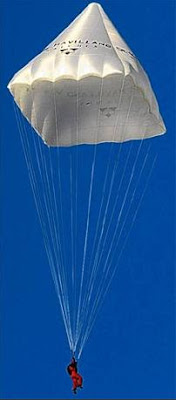






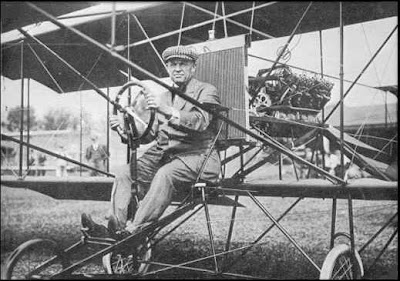
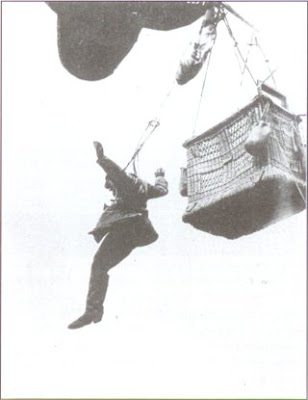





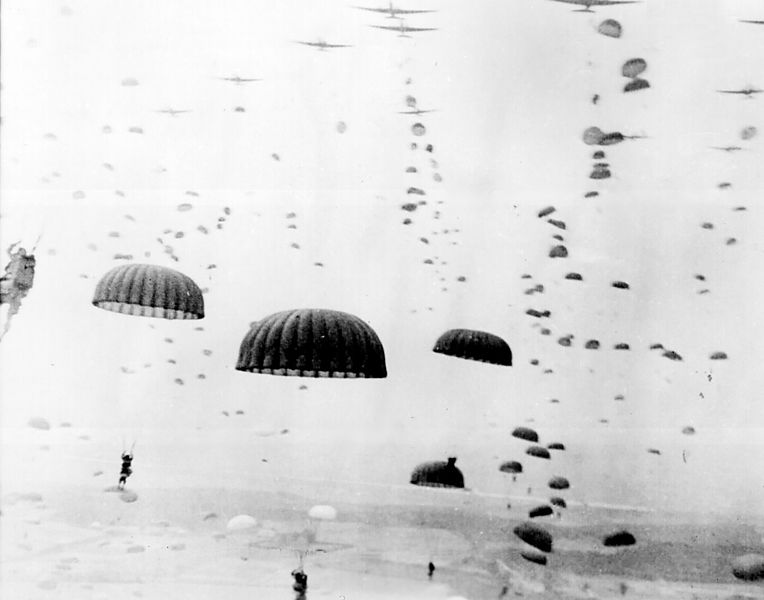

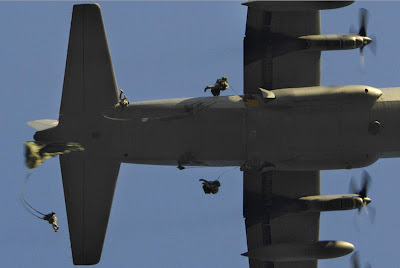

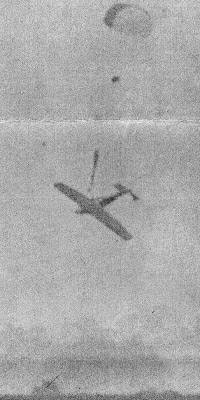
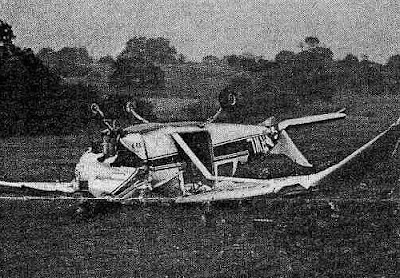

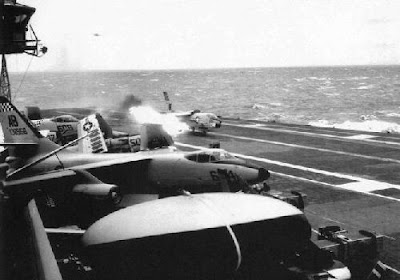

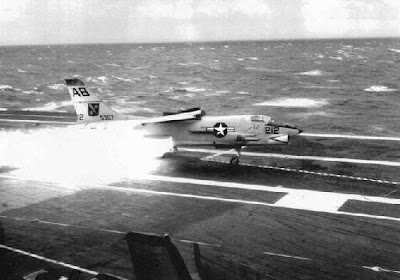
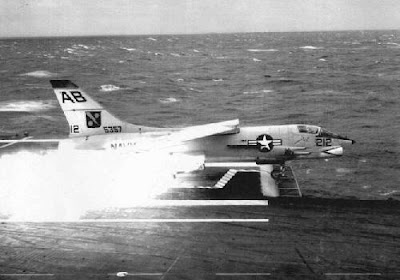


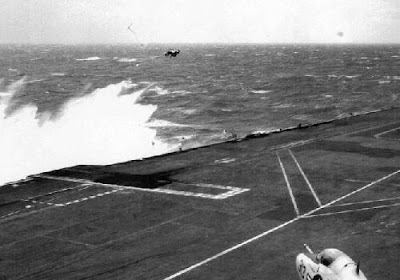


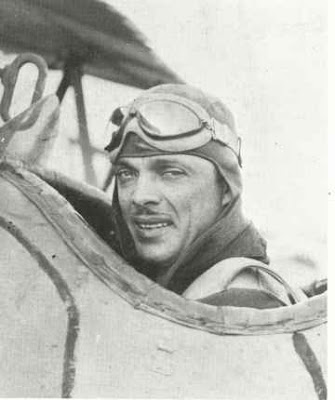

Images of all those paratroopers always reminds me of sea urchins.
Great post, with great videos, Peter!
Great story as always thanks.
My goodness, what a wonderfully written post. I might point out that the MiG-29 pilot was so monumentally lucky as to defy belief: When a parachute opens, the shock of the pilot slowing down suddenly causes it to partially collapse, and then reinflate as it stabilizes. It was only by timing this sudden deceleration exactly right, that the pilot survived. Also, the video of the LAPES (low-altitude parachute extraction system) trial with the jeep that runs for its life, is something I’ve looked for off and on for a long time, and which I greatly enjoyed seeing again. Finally, there is an F-18 in the Canadian Forces which has been successfully ejected from twice, and thence repaired and returned to service. I don’t know if this is unique, but it must certainly be unusual! -Jim
Hehe. The Tai Tapu springs are on a farm on the Canterbury Plains at least 15 miles from the nearest volcano. I used to shoot Ducks on a farm opposite where the springs were.
A DAIRY FARM. Cow dung, Nitrates, ect. A fool and his money…..